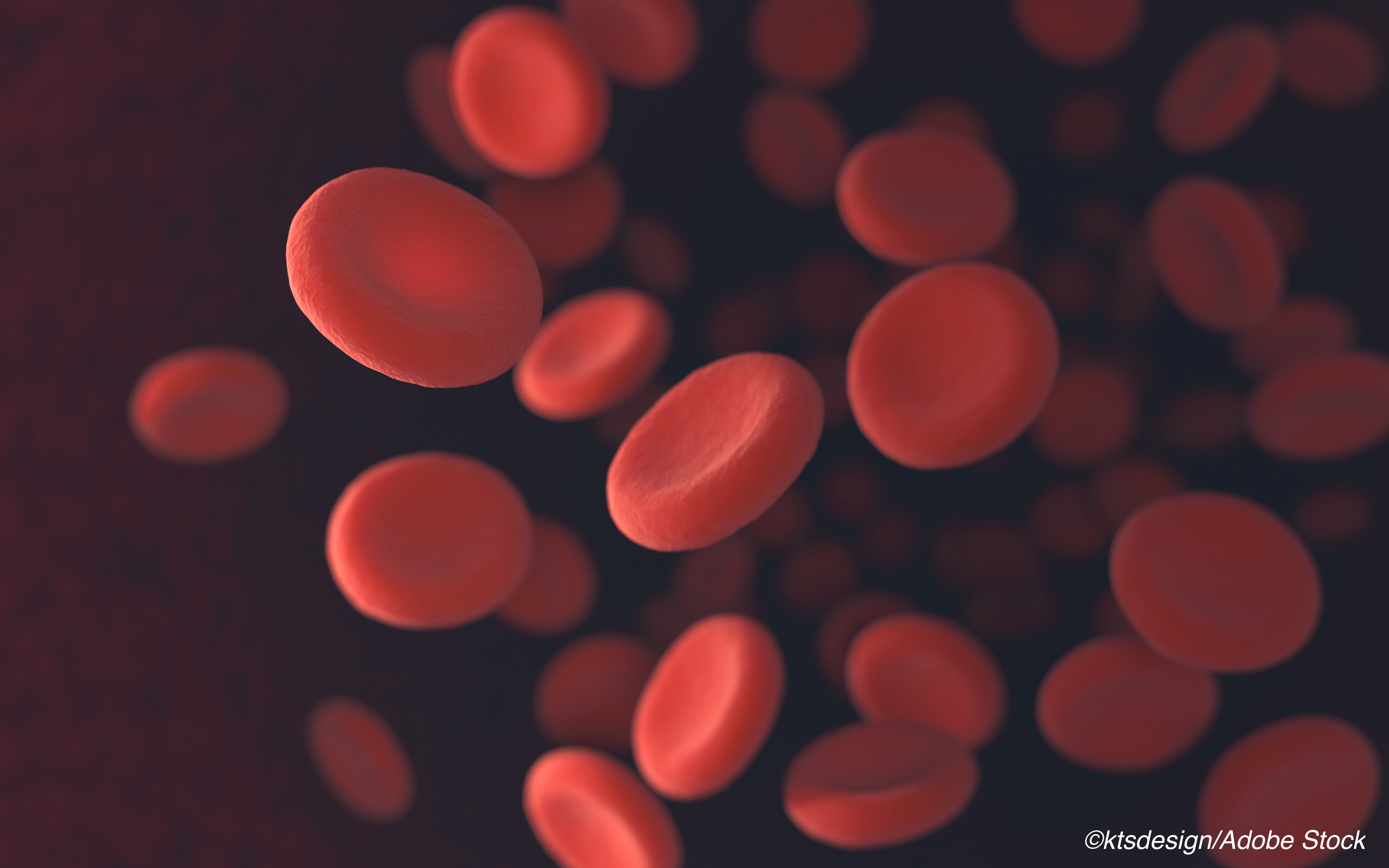 A drop of 3 g/dl or more in hemoglobin — with or without overt bleeding — in acute coronary syndrome (ACS) patients hospitalized following transradial PCI portended increased one-year mortality, a post-hoc analysis of data from the MATRIX trial found.
A drop of 3 g/dl or more in hemoglobin — with or without overt bleeding — in acute coronary syndrome (ACS) patients hospitalized following transradial PCI portended increased one-year mortality, a post-hoc analysis of data from the MATRIX trial found.
“In patients with ACS managed invasively, in-hospital decreases in hemoglobin levels ≥3 g/dl, even in the absence of overt bleeding events, were common and independently associated with an increased risk for all-cause mortality at one year,” wrote Marco Valgimigli, MD, PhD, of the University of Bern in Switzerland, and co-authors in the Journal of the American College of Cardiology. “If confirmed, these results may help the identification of higher risk patients and inform contemporary bleeding definitions.”
MATRIX consisted of three nested randomized controlled trials of patients with ACS, with or without ST-segment elevation.
The post-hoc analysis grouped patients based on the presence and amount of in-hospital hemoglobin drop (minimal was classified as <3 g/dl; minor 3 to <5 g/dl; major 5 g/dl or more) and whether or not they had overt bleeding. The primary endpoint was all-cause mortality one year from ACS.
Of 7,781 patients, 83.6% had any hemoglobin drop. Of all drops seen, 91.4% were minimal (<3 g/dl). These were not associated with one-year mortality in patients with or without overt bleeding.
Of patients with a hemoglobin drop, 88.5% had no overt bleeding. For these participants, minor drops were associated with one-year mortality (HR 2.37, 95% CI 1.32-4.24, P=0.004), but the association became non-significant when people with baseline anemia were excluded. Major drops were independently associated with higher one-year mortality (HR 2.58, 95% CI 0.98-6.78, P=0.054).
Among patients with overt bleeding, both minor (HR 3.53 95% CI 1.06-11.79, P=0.040) and major (HR 13.32, 95% CI 3.01-58.98, P=0.001) hemoglobin drops were linked to one-year mortality.
Taken with evidence that bleeding minimization strategies are effective, the continuous, independent association with long-term mortality in this study “supports the concept that a threshold of in-hospital hemoglobin reduction higher than 3 g/dl may serve as a valid surrogate endpoint,” Valgimigli and colleagues wrote. “As such, this level of hemoglobin reduction could complement contemporary definitions of bleeding endpoints and be easily implemented because of the simple, reliable, and inexpensive measurement.”
Despite the association of bleeding events with outcomes in patients with ACS treated invasively, most studies in the area “do not require systematic investigation of potential sources of hemoglobin loss,” they pointed out. “Thus, in clinical practice as well as in clinical research, many potential bleeding events may remain occult.”
This study looks at an “under-recognized and under-reported issue,” noted Olivier Barthelemy, MD, of the Sorbonne University in France, and co-authors, in an accompanying editorial.
“Whether it advocates including hemoglobin drop without overt bleeding in current bleeding classifications remains an open issue,” they wrote. “The next steps are to take into account minimal hemoglobin drop related to other conditions than bleeding and to confirm the most relevant threshold of hemoglobin drop predicting cardiovascular outcomes.”
The Bleeding Academic Research Consortium (BARC) categorization of bleeding, proposed to systematize reporting and research, classifies bleeding events as types 1 to 5. Type 1 is not considered actionable; type 2 is any overt actionable sign of hemorrhage that prompts evaluation or change in care; type 3 is overt bleeding with hemoglobin drop of 3 to 5 g/dl; type 4 includes bleeds related to coronary artery bypass grafting, perioperative intracranial bleeding, and other clinical criteria; and type 5 is probable or definite fatal bleeding.
A 2014 registry study of successive patients with ST segment elevation myocardial infarction found that one-year mortality was 11.5% with BARC type 1 bleeding and 43.5% with BARC type 3b, which was the strongest predictor of one-year mortality.
In their analysis, Valgimigli and colleagues included MATRIX patients if they were alive 24 hours after randomization and had in-hospital hemoglobin values available.
The proportion of patients with minor or major hemoglobin drop was higher among those with overt bleeding (15.1% and 3.5%, respectively) compared with those without overt bleeding (4.7% and 1.1%, respectively, P<0.001). For patients with overt bleeding, 36.8% had BARC type 2 bleeding, while 16.4% had BARC type 3 or 5 bleeding.
Predictors of having either minor or major hemoglobin drop included age (OR 1.31 for each increase of 10 years, P<0.001), female sex (OR 1.52, P<0.001), non-ST segment elevation ACS (OR 0.63, P<0.001); troponin-negative non-ST segment elevation ACS (OR 0.43, P=0.011), and receiving clopidogrel on admission (OR 0.76, P=0.005). “Notably, baseline hemoglobin independently predicted both major or minor hemoglobin drop and BARC type 3 or 5 bleeding,” Valgimigli and co-authors wrote.
Limitations of the study include post-hoc analysis with insufficient power to determine outcome differences across hemoglobin reduction subgroups. Also, conditions associated with chronic anemia were not systematically analyzed. Because hemoglobin was not assessed in MATRIX follow-up, the analysis could not differentiate the effects of hospital-only versus more persistent anemia.
-
A drop of 3 g/dl or more in hemoglobin, with or without overt bleeding, in patients with acute coronary syndrome (ACS) hospitalized following transradial PCI was an indicator of increased one-year mortality, a post-hoc analysis of data from the MATRIX trial found.
-
No independent association between minimal (<3g/dl) hemoglobin drop and mortality was observed in the study.
Paul Smyth, MD, Contributing Writer, BreakingMED™
The MATRIX trial was sponsored by Società Italiana di Cardiologia Invasiva which received grant support from The Medicines Company and Terumo. This substudy did not receive any direct or indirect funding.
Valgimigli received grants and personal fees from Abbott, Terumo, AstraZeneca; personal fees from Chiesi, Bayer, Daiichi- Sankyo, Amgen, Alvimedica, Biosensors, and Idorsia; and grants from Medicure outside the submitted work.
Barthelemy received travel and meeting support from Amgen, Bayer Healthcare, Boston Scientific, and Cardinal Health.
Cat ID: 306
Topic ID: 74,306,730,306,5,192,925


